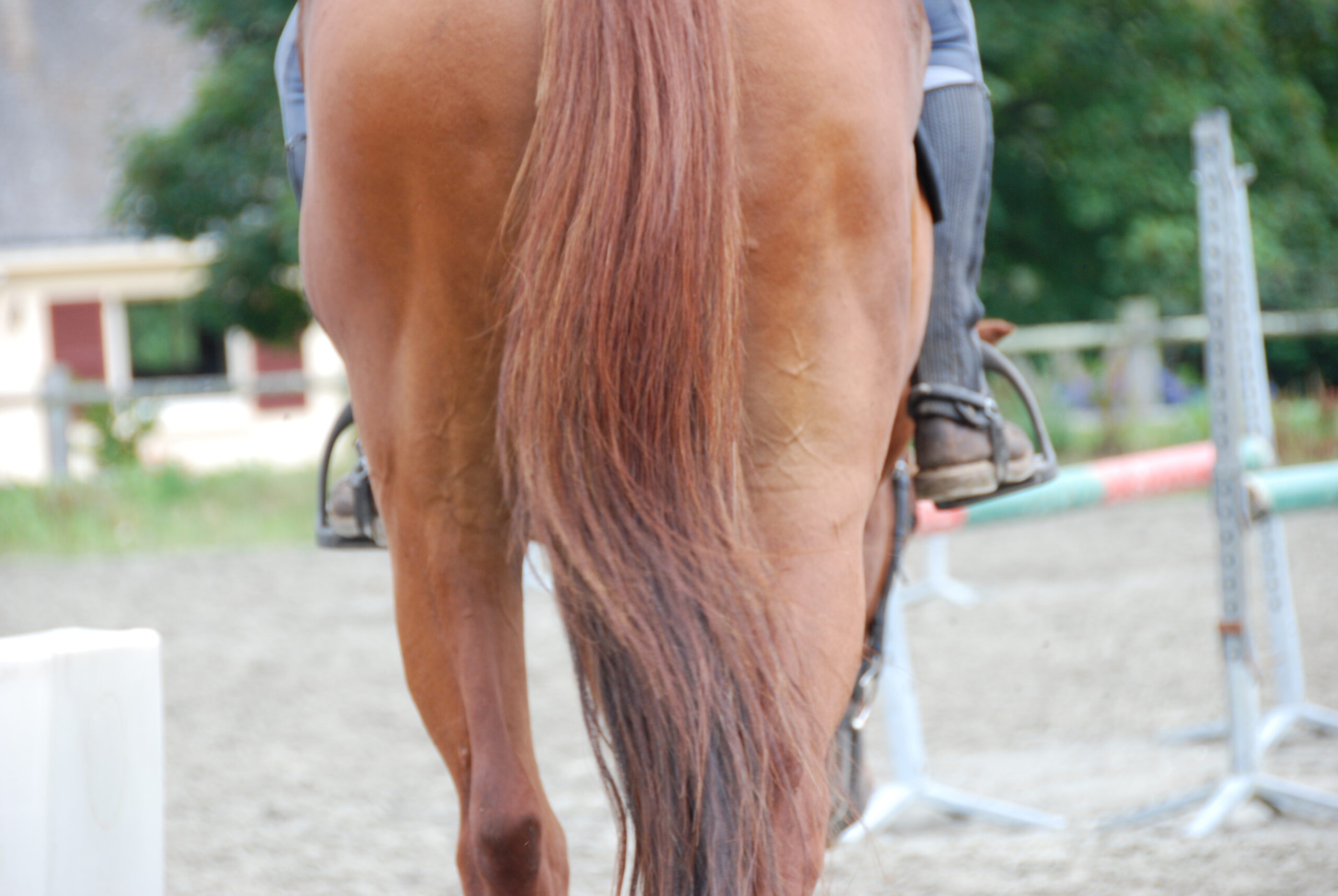Navicular syndrome is an inflammatory and degenerative complex involving the navicular bone of the foot and surrounding tissues. The syndrome affects the forelimbs of adult horses.

Early signs of navicular syndrome
At the beginning of the process, the signs are vague, with the owner reporting discomfort that varies in intensity, sometimes on the right, sometimes on the left. Over time, the horse develops a mild to moderate lameness that becomes more pronounced when working on the rein and on hard ground. The problem is always bilateral, but the lameness may be asymmetrical and vary from side to side from one day to the next.
Manifestations of navicular syndrome in horses
As the horse tries to reduce pain in the heel, where the navicular bone is located, it will touch the ground first with the front part of its foot (pinch) instead of laying it flat. Strides become shorter and shorter, and many people think that the horse has a shoulder problem. Clinical diagnosis is also based on a painful digital hyper-extension test (plank test). If the lameness disappears after numbing the area, a full radiological examination of the navicular bone in both forelimbs will be necessary to assess whether there is involvement of the bone itself and its extent, or whether only peripheral soft tissues are involved.
Can a navicular horse be treated?
Navicular syndrome is irreversible. The aim of treatment is to halt the development of the disease and relieve the animal of chronic pain, so that it can eventually continue working. There are several treatment options, but none is universally successful.
A first recommendation is foot trimming and orthopedic shoeing. Work must be adapted: avoid hard ground and uphill gradients, reduce, or stop jumping… Several drugs are also used, with varying degrees of success. It is also possible to have a nevrectomy of the palmar digital nerves. This surgical procedure removes around 2 cm of the nerves. Before resorting to this surgery, which removes sensitivity and therefore pain in the navicular region, the owner must be informed that the horse will no longer be able to take part in many competitions (see legislation in each country) and that a daily examination of the foot will have to be carried out, as the horse will no longer feel the presence of any foreign body that may have been stuck in its frog. The long-term sporting prognosis of a horse affected by navicular syndrome therefore remains reserved, at the dawn of the 3rd millennium.


